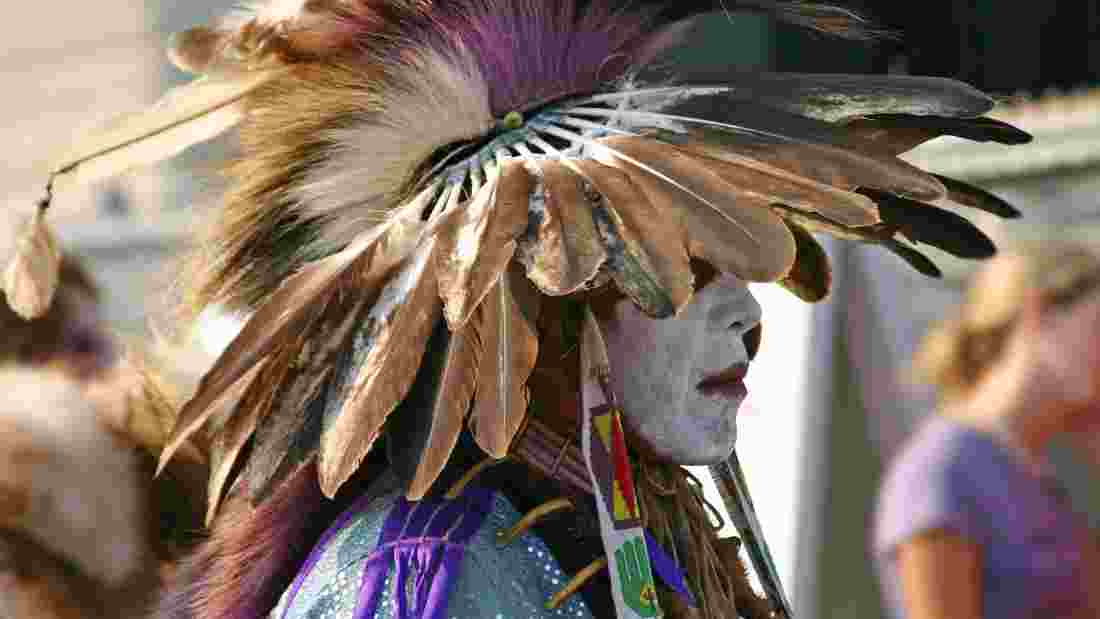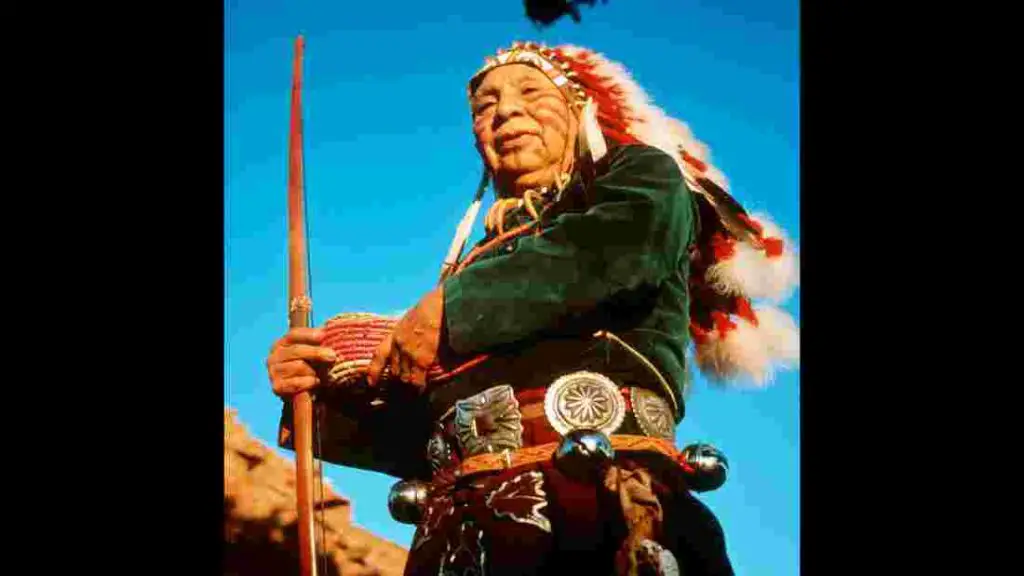
Guardians of the Sacred: The Enduring Role of Shamans in Native American Culture
The beating drum reverberates through the sacred lodge, a rhythmic heartbeat connecting earth to sky. Smoke from burning sage coils upwards, carrying prayers on its fragrant tendrils. In the center, a figure – often called a medicine person, spiritual leader, or healer – chants ancient songs, their voice a conduit between worlds. This is the enduring presence of the shaman, a pivotal figure in Native American cultures whose role transcends mere healing, encompassing spiritual guidance, historical preservation, and the very fabric of community well-being.
To understand the shaman’s role is to delve into the profound spiritual worldview of Indigenous peoples of North America, a worldview that perceives the universe as interconnected and alive, where every rock, tree, and creature possesses spirit, and where balance (Hózhó in Navajo, "walking in beauty") is the ultimate aspiration. These spiritual leaders are not just practitioners of ritual; they are keepers of ancient wisdom, mediators between the seen and unseen, and vital anchors for their communities through centuries of change and challenge.

Dispelling the Monolithic Myth: Diverse Roles, Shared Purpose
It’s crucial to acknowledge from the outset that the term "shaman" itself, borrowed from Siberian Tungusic languages, is an umbrella term that does not fully capture the diverse array of spiritual roles across the hundreds of distinct Native American nations. Each tribe – be it Lakota, Navajo, Cherokee, Hopi, Iroquois, or countless others – has its own unique spiritual traditions, names for their sacred practitioners, and specific ceremonial practices. There is no single "Native American shaman." Instead, we find "medicine men and women," "holy people," "spiritual guides," "dream interpreters," "conjurers," and "ritual specialists," each with nuanced responsibilities tailored to their community’s specific needs and cosmology.
However, despite this immense diversity, common threads unite these figures, revealing a shared purpose: to maintain harmony and balance within the individual, the community, and the natural world.
The Healer of Body, Mind, and Spirit
Perhaps the most widely recognized role of the shaman is that of a healer. Unlike Western medicine, which often compartmentalizes physical and mental ailments, Native American healing traditions adopt a holistic approach. Illness is rarely seen as purely physical; it is often understood as a manifestation of spiritual imbalance, a disharmony within the individual or between the individual and their environment, community, or the spirit world.
The medicine person, therefore, aims to restore this balance. Their methods are diverse and potent, often involving a combination of:
- Herbal Medicine: Extensive knowledge of indigenous plants and their medicinal properties is fundamental. Sage for purification, cedar for protection, tobacco for offerings, and countless other plants for specific ailments are used with reverence and precision.
- Ceremonies and Rituals: These can range from individual healing ceremonies involving chanting, drumming, and specific prayers, to larger communal rituals like the Sun Dance (Lakota) or Navajo Blessingway, which aim for collective purification and renewal.
- Spiritual Extraction: It is believed that illness can be caused by intrusive thoughts, negative energies, or the loss of one’s spirit (soul loss). Shamans may perform rituals to "extract" these negative influences or to retrieve a lost soul part, often entering altered states of consciousness to do so.
- Psychological and Emotional Support: Beyond physical symptoms, shamans address trauma, grief, anxiety, and depression, providing a framework for understanding suffering and a path towards emotional release and spiritual resolution. Their empathetic listening and spiritual guidance are vital for mental well-being.

As a contemporary Native American elder once articulated, "Our medicine is not just about curing a sickness; it is about bringing a person back into alignment with the universe, with their ancestors, and with their true self."
Bridge Between Worlds: The Spiritual Mediator
Beyond healing, shamans serve as vital intermediaries between the physical world and the spirit world. They are believed to possess the unique ability to communicate with spirits – ancestral spirits, nature spirits (animal guides, plant spirits, elemental forces), and benevolent deities. This connection is not merely symbolic; it is a direct, experiential one, often achieved through trance states induced by drumming, rhythmic chanting, vision quests, or the ceremonial use of sacred plants (though the latter is less common than often portrayed in popular media and varies greatly by tribe).
Through these altered states, shamans seek guidance, prophecies, and solutions to community problems. They may journey to the spirit world to retrieve lost souls, gain knowledge for healing, or intercede on behalf of their people. This role as a spiritual bridge is crucial for maintaining the community’s spiritual health, ensuring good harvests, successful hunts, and protection from harm.
Keeper of Knowledge and Tradition
In cultures primarily reliant on oral tradition, the shaman often serves as a living library of their people’s history, myths, legends, and ceremonial protocols. They are the custodians of sacred stories that explain the origins of the world, the lineage of their people, and the ethical frameworks that govern their society. They teach through storytelling, ritual, and example, ensuring that vital cultural knowledge is passed down accurately from generation to generation.
This knowledge encompasses not only spiritual lore but also practical wisdom: understanding of ecological systems, seasonal cycles, medicinal plants, hunting practices, and social customs. The shaman’s memory and interpretive skills are paramount to the community’s continuity and identity.
Community Pillar and Social Cohesion
The shaman’s influence extends deeply into the social fabric of the community. They often play roles in:
- Rites of Passage: Guiding individuals through significant life transitions such as birth, naming ceremonies, puberty rites, marriage, and death. These ceremonies imbue life events with spiritual meaning and integrate individuals more fully into the community.
- Conflict Resolution: Using their spiritual authority and wisdom, shamans may mediate disputes, restore harmony between individuals or families, and address social imbalances that threaten communal well-being.
- Moral and Ethical Guidance: Through their teachings and personal conduct, shamans reinforce the community’s moral code, promoting values such as respect for elders, reverence for nature, generosity, and communal responsibility. They are often seen as exemplars of their culture’s highest ideals.
- Addressing Collective Trauma: In the face of historical trauma – the enduring legacy of colonialism, genocide, forced assimilation, and cultural suppression – shamans and medicine people have been instrumental in helping communities process grief, reclaim identity, and foster resilience. Their ceremonies and teachings provide a powerful framework for healing collective wounds.
The Path to Becoming a Medicine Person
Becoming a medicine person is rarely a matter of personal choice or ambition. It is typically a calling, a spiritual imperative often revealed through dreams, visions, or surviving a profound illness or near-death experience. It can also be an inherited gift, passed down through specific family lines.
Once called, the path is arduous and lifelong. It involves:
- Intensive Apprenticeship: Learning directly from an elder medicine person, often over many years, involving rigorous spiritual discipline, memorization of complex rituals, and deep study of natural medicines.
- Vision Quests: Solitary journeys into nature, often without food or water, to seek guidance from spirits and receive personal revelations.
- Personal Sacrifice: A life dedicated to service, often requiring personal austerity and a deep commitment to the well-being of others above self.
- Continuous Learning: The journey of a medicine person is one of perpetual learning, adapting to new challenges, and deepening their connection to the spiritual realm.
Challenges and the Enduring Legacy
The role of Native American spiritual leaders has faced immense challenges. Colonial policies actively suppressed Indigenous spiritual practices, outlawing ceremonies like the Sun Dance and Ghost Dance, persecuting medicine people, and forcing conversion to Christianity. The boarding school system further severed generations from their cultural roots, language, and spiritual heritage.
Today, there are new challenges, including the appropriation and commodification of Native American spiritual practices by "New Age" movements, which often strip them of their cultural context and sacred meaning. This underscores the importance of respecting tribal sovereignty and seeking guidance from legitimate, tribally recognized spiritual leaders.
Despite these immense pressures, the spiritual traditions and the role of medicine people have shown remarkable resilience. There is a powerful resurgence of Indigenous languages, ceremonies, and traditional healing practices. Young people are increasingly seeking out elders to learn the old ways, recognizing the profound wisdom and healing power embedded within their heritage.
In contemporary Native American communities, medicine people continue to play a vital role in addressing modern challenges like addiction, intergenerational trauma, and cultural identity loss. They provide a sense of continuity, belonging, and spiritual strength in a rapidly changing world. They remind their people of who they are, where they come from, and the sacred connection they share with the land and all living beings.
Conclusion
The "shaman" in Native American culture is far more than a healer; they are a living embodiment of their people’s spiritual worldview. They are the guardians of sacred knowledge, the mediators of spiritual wisdom, and the bedrock of community well-being. Their role is not static but dynamic, adapting to the needs of their people while remaining rooted in ancient principles of balance, respect, and interconnectedness. As the drum continues to beat and the smoke rises, these sacred figures continue to guide their communities, ensuring that the ancient heartbeat of Native American spirituality endures, strong and vibrant, for generations to come.


